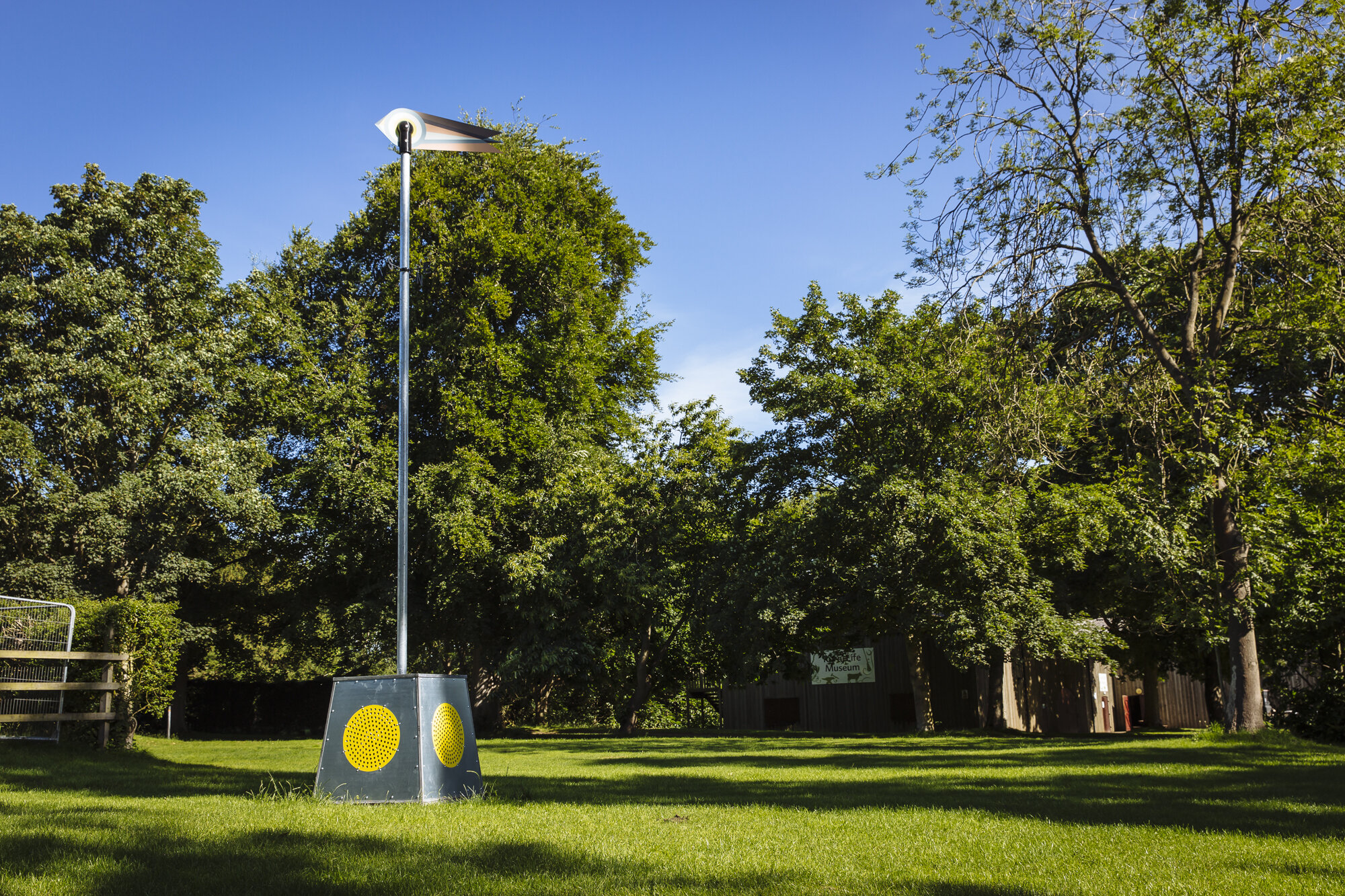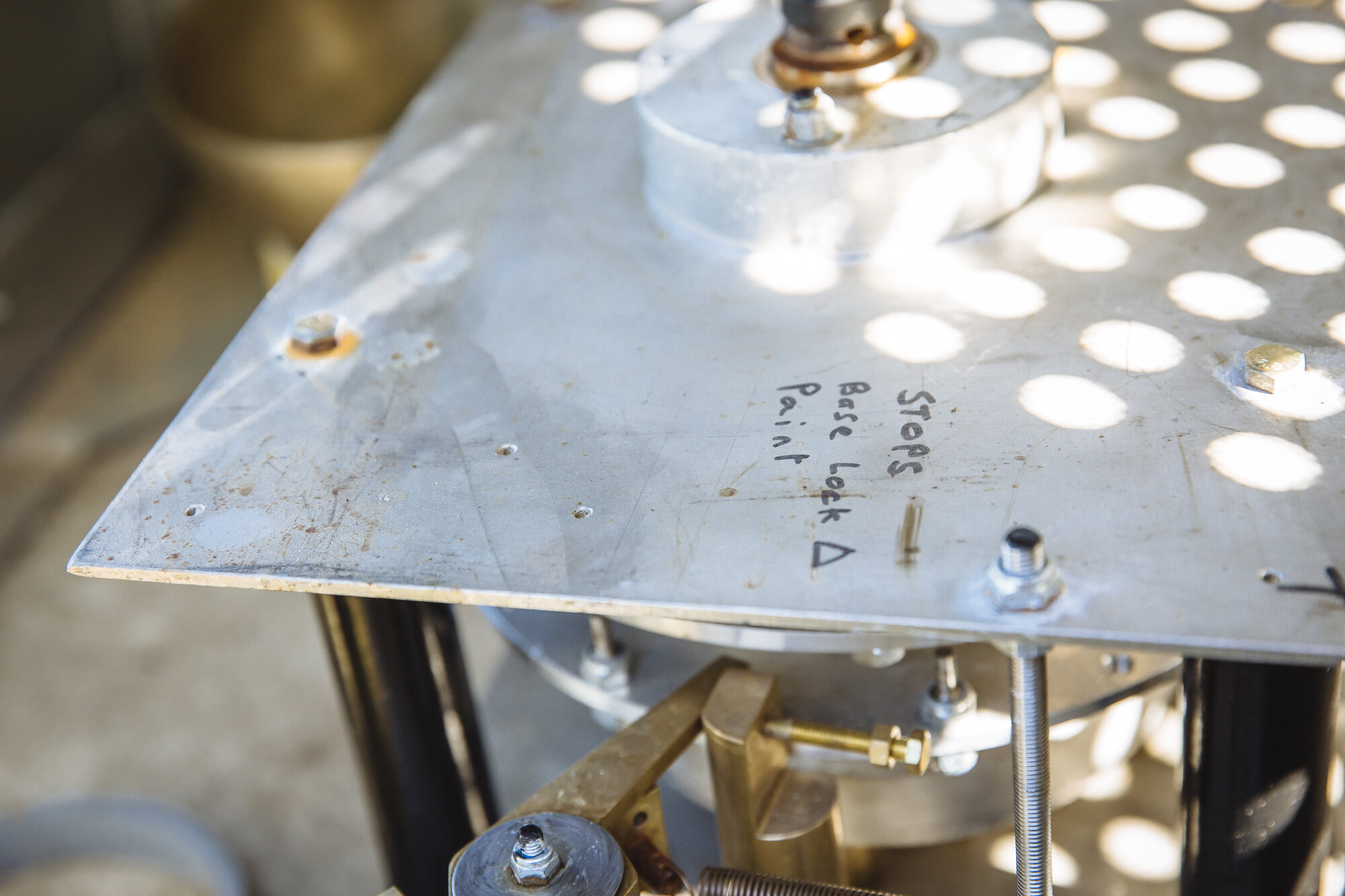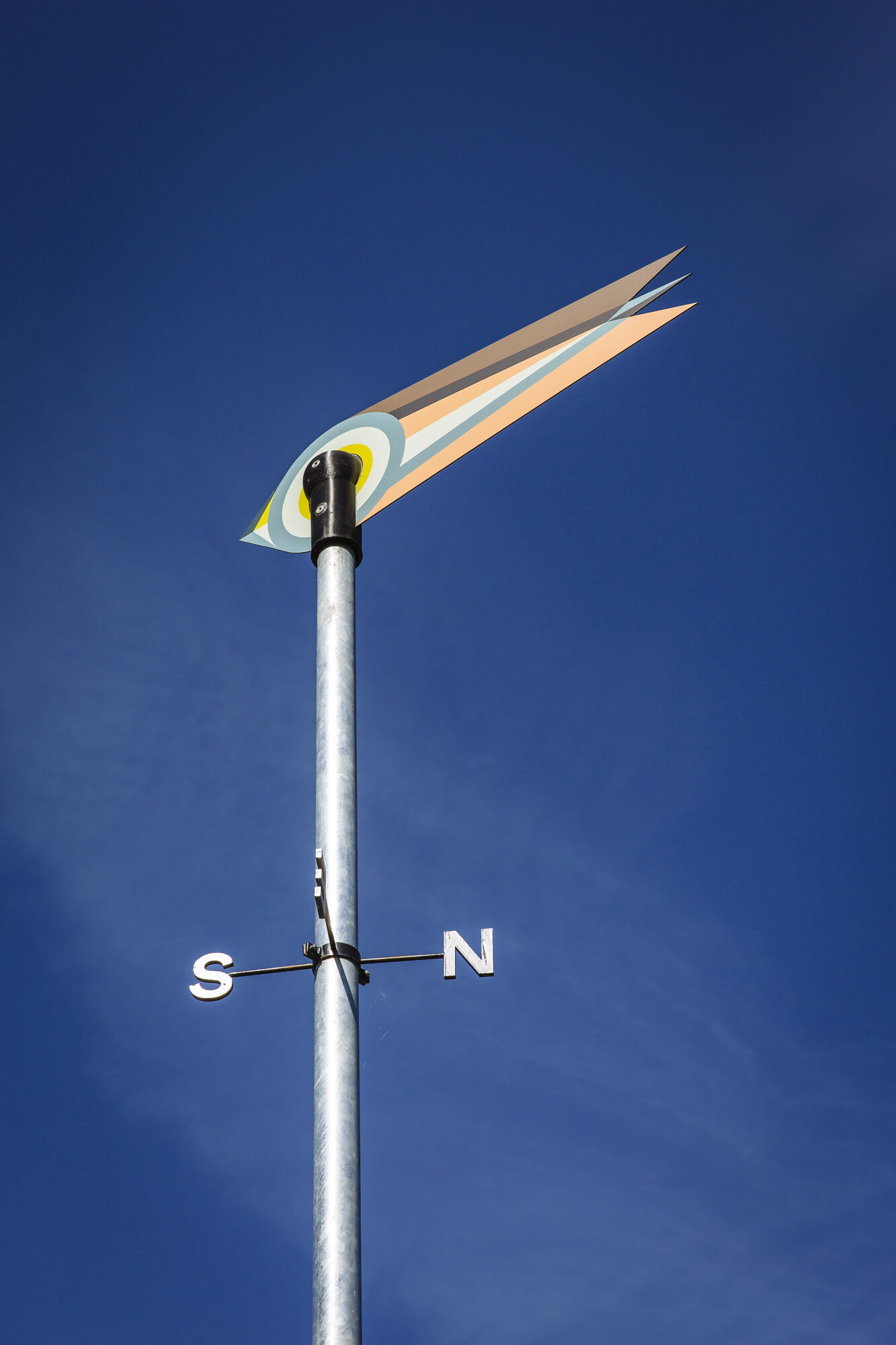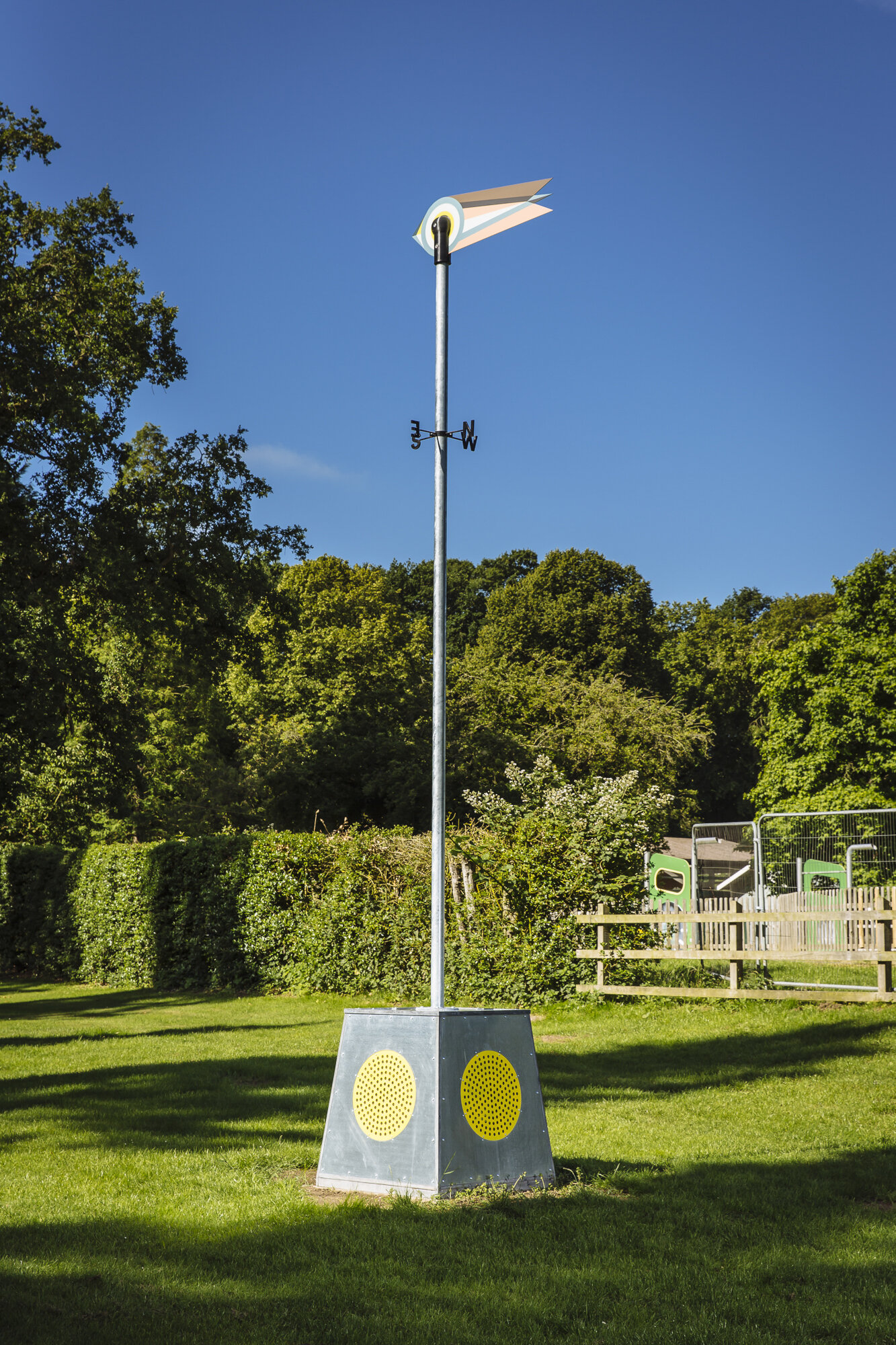Photos: James Mulkeen
Never Eat Soggy Wheat
2020
‘Never Eat Soggy Wheat’ was inspired by Lincolnshire’s wildlife, agriculture and a farmers heightened awareness of the wind and weather. The ‘Wind Bell’ has also been informed by the collection at the Rural Life Museum. The utilitarian aesthetic qualities of the machinery and how they were used to work the land between 1850 and 1950 have provided inspiration and reference points from where to begin. The work explores the qualities of the machinery in the collection and re-appropriates construction methods and materials whilst providing new ideas of what we can harvest from the grounds of Normanby Hall.
A farmer’s elemental awareness of the weather and the potential impact on yield has provided one of the main catalysts for this work. Their navigational awareness and ability to read weather conditions is in stark contrast to the abilities of most people today. It is neatly summed up in the following traditional saying taken from an article about Lincolnshire dialect.
‘It's looking rare and black o’wer Bill's mothers noo’ – (it’s looking very grey and dark and bad weather is coming)
The site-specific weather vane incorporates a colour-coded indicator/sail to catch winds from all directions and make their direction highly visible to visitors. It also acts as a navigational marker by highlighting the location of the museum with flashes of colour and movement that will be visible from afar.
Hovering above farmland, kestrels have learned to watch mechanised farming operations, waiting for tractors to flush their prey from crops. They work with farmers by keeping populations of crop consuming voles under control and are widely regarded as a farmers friend. The sail of the proposed wind bell is reminiscent of a kestrel hovering in the breeze. The colours of this bird of prey have been borrowed and applied to the concept as another reference to Lincolnshire farming. The roundel feature also serves as a reminder of Lincolnshire’s RAF heritage.
Hidden inside the base unit are two Tibetan singing bowls, chosen for their resonance and volume. It is hoped that the unique sound of these bowls will help people make a mindful link to the qualities of their immediate environment. It will sound every time the wind changes direction.
Location - Normanby Hall and Country Park, North Lincolnshire
Materials - Fabricated mild steel (galvanised), printed Dibond, 3D printed components, internal mechanism and 2 x seven metal singing bowls.
Height - 6 metres





